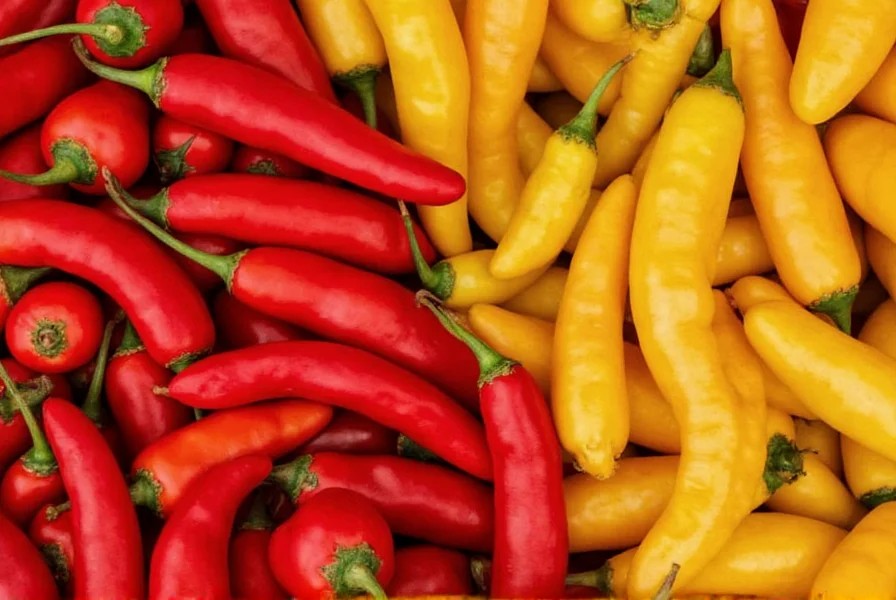Understanding the distinction between chili vs chile spelling matters for clear communication across culinary, regional, and linguistic contexts. This guide clarifies usage patterns, historical roots, and practical applications to help you choose the appropriate term whether writing recipes, traveling, or discussing global cuisines.
Etymology and Historical Development
The word originates from the Nahuatl (Aztec) term chīlli, adopted into Spanish as chile. Spanish colonizers introduced both the plant and its name to global audiences. When the term entered English usage through Mexican and Southwestern US channels, spelling variations emerged:
| Spelling Form | First Documented Use | Linguistic Pathway |
|---|---|---|
| Chile | 1521 (Spanish records) | Direct Spanish adoption from Nahuatl |
| Chili | 1804 (American English) | Anglicized spelling reflecting pronunciation |
| Chilli | 1760 (British English) | British colonial adaptation |
These variations reflect how languages adapt foreign terms. The double-“l” in “chilli” follows British English conventions (like “travelling”), while American English simplified to single-“l” as seen in “traveling”.
Regional Usage Patterns
Geographic location significantly influences which spelling appears in common usage:
- United States: “Chili” dominates nationally, especially in recipes and product labeling. “Chile” appears predominantly in New Mexico, Arizona, and Texas where Spanish linguistic influence remains strong
- Mexico and Latin America: Spanish-language contexts exclusively use “chile” (pronounced “chee-leh”)
- United Kingdom and Commonwealth: “Chilli” remains standard spelling
- Culinary professionals: Often use “chile” when discussing authentic preparations to honor cultural origins
Notably, New Mexico officially designated “chile” as its preferred spelling in 1999, recognizing its cultural significance to the state's identity. This regional distinction creates interesting conflicts when national brands enter Southwestern markets.
Culinary Contexts and Terminology
The spelling difference carries implications in food contexts:
- Chile typically refers to the fresh or roasted pepper itself, especially in Southwestern US cuisine
- Chili often denotes the cooked dish (chili con carne) or dried, powdered form
- Chili powder contains additional spices beyond ground chile peppers
When examining authentic Mexican recipes, you'll consistently find “chile” used for ingredients. American cookbooks frequently use “chili” regardless of context. This distinction helps identify recipe authenticity and cultural origins.
Practical Usage Guidelines
Follow these evidence-based recommendations for proper usage:
- When writing for American audiences: Use “chili” unless specifically discussing Southwestern US or Mexican contexts where “chile” appears appropriate
- When referencing the plant or fresh peppers: “Chile” better reflects botanical and cultural accuracy
- When discussing the cooked dish: “Chili” remains standard (chili con carne, chili powder)
- Academic or linguistic contexts: Use “chile” when emphasizing etymology or Spanish language connections
Consider your audience's location and expectations. A recipe blog targeting New Mexico residents should use “chile” consistently, while a national food magazine might standardize on “chili” with occasional exceptions for regional authenticity.
Common Misconceptions Clarified
Several persistent myths surround this spelling difference:
- Myth: “Chile” refers only to green peppers while “chili” means red
- Reality: Color variation exists within both spellings—New Mexico chiles range from green to red
- Myth: “Chile” is always pronounced “chill-ee”
- Reality: In Spanish and Southwestern US usage, it's pronounced “chee-leh” (with soft “ch”)
- Myth: The spelling difference indicates different pepper varieties
- Reality: Same Capsicum species—spelling reflects linguistic tradition, not botanical classification
Practical Examples in Context
Understanding when to use chili vs chile becomes clearer through real-world applications:
- “We harvested ripe red chile peppers from our garden to make traditional New Mexico ristras” (Southwestern US context)
- “The recipe calls for two tablespoons of chili powder and one diced jalapeño” (standard American English)
- “Mexican cuisine features complex chile varieties including guajillo, ancho, and pasilla” (cultural authenticity)
- “Texas-style chili con carne contains no beans, distinguishing it from other regional versions” (dish-specific usage)
These examples demonstrate how context determines appropriate spelling. The key is matching your terminology to your subject matter's cultural and regional framework.
Conclusion: Making Informed Spelling Choices
The chili vs chile spelling difference represents more than just orthographic variation—it reflects cultural heritage, regional identity, and linguistic evolution. While both forms remain acceptable, understanding their distinct usage patterns helps communicate more precisely about this globally significant ingredient. Whether you're writing a cookbook, traveling through the American Southwest, or studying culinary history, recognizing these nuances enhances both accuracy and cultural sensitivity.
Frequently Asked Questions
Is one spelling of chili/chile more correct than the other?
Neither spelling is inherently more correct—both are valid. “Chile” represents the original Spanish spelling and pronunciation, while “chili” is the anglicized American English version. Correct usage depends on regional context and intended audience.
Why does New Mexico use 'chile' instead of 'chili'?
New Mexico officially adopted “chile” in 1999 to honor its Spanish and Native American heritage. The state's agricultural tradition with these peppers spans centuries, making the Spanish spelling culturally significant. Locals pronounce it “chee-leh”, distinguishing it from the American “chill-ee” pronunciation.
Does the spelling difference indicate different pepper varieties?
No, spelling doesn't indicate botanical differences. Both “chili” and “chile” refer to peppers from the Capsicum genus. The same physical pepper might be called “chile” in New Mexico and “chili” in other US regions. Variety names (like jalapeño or habanero) indicate actual botanical differences.
How should I spell it when writing recipes for a national audience?
For national American audiences, “chili” remains the safer choice for general usage. However, when specifically referencing Southwestern or Mexican preparations, using “chile” adds authenticity. Many professional food writers use “chile” when discussing fresh peppers and “chili” for the cooked dish or powder.
What's the proper pronunciation for 'chile'?
In Spanish and Southwestern US usage, “chile” is pronounced “chee-leh” (with a soft “ch” like the “ch” in “cheese”). The Americanized “chili” is typically pronounced “chill-ee”. Regional pronunciation often aligns with spelling preferences.











 浙公网安备
33010002000092号
浙公网安备
33010002000092号 浙B2-20120091-4
浙B2-20120091-4